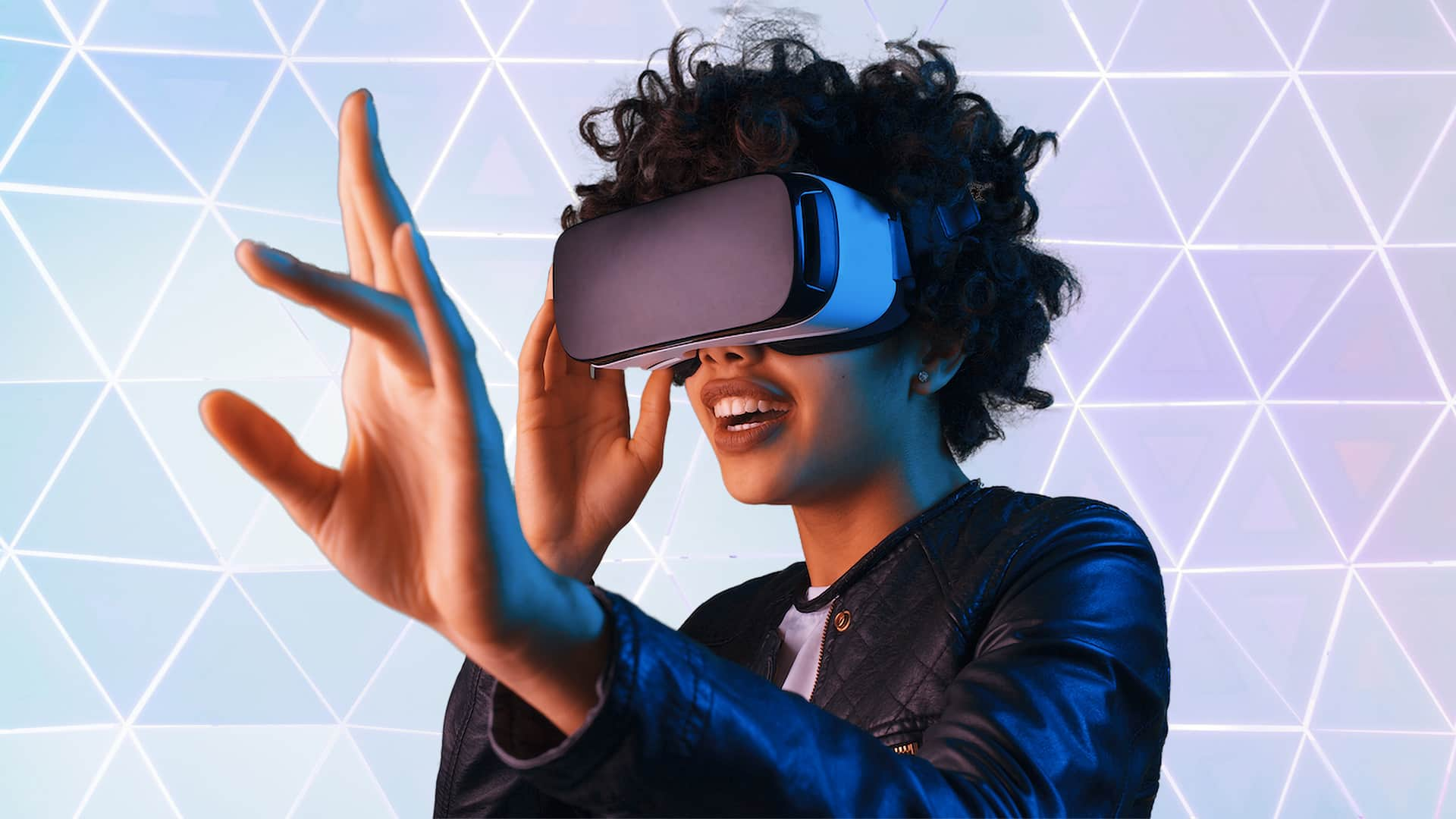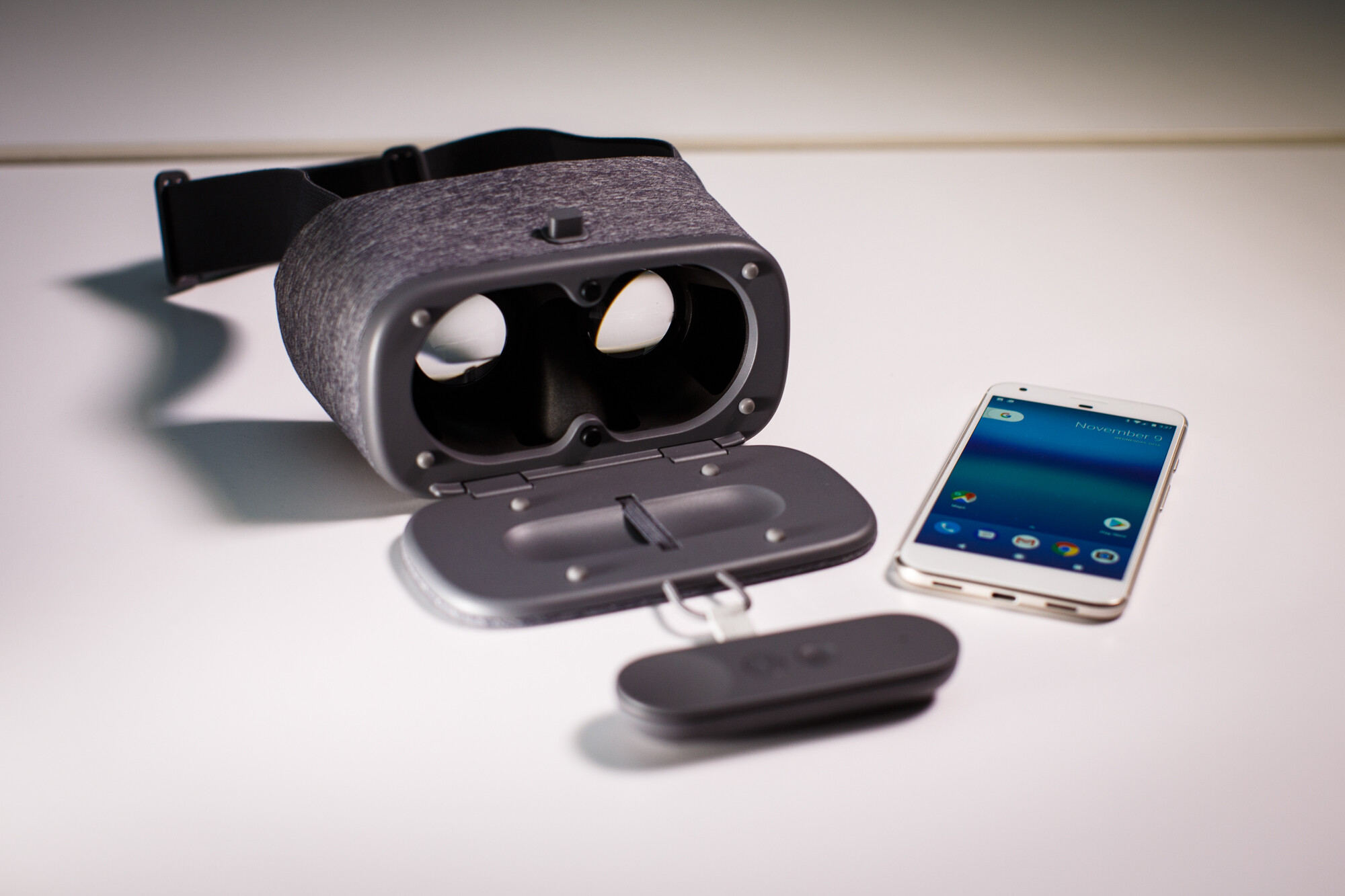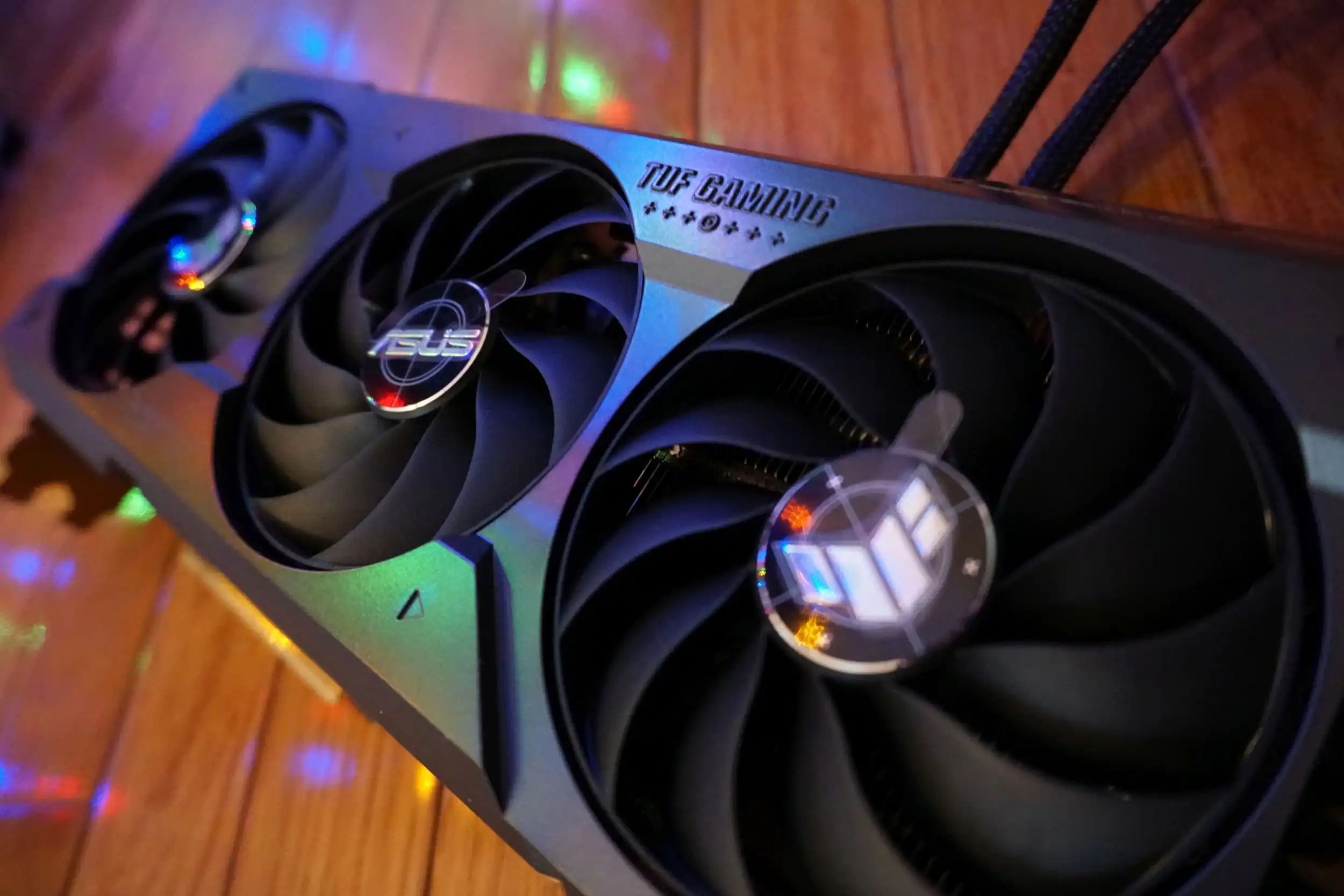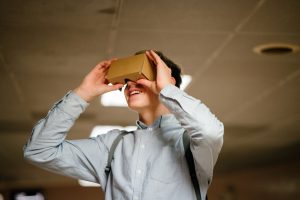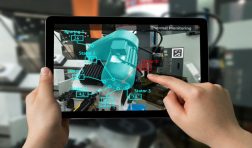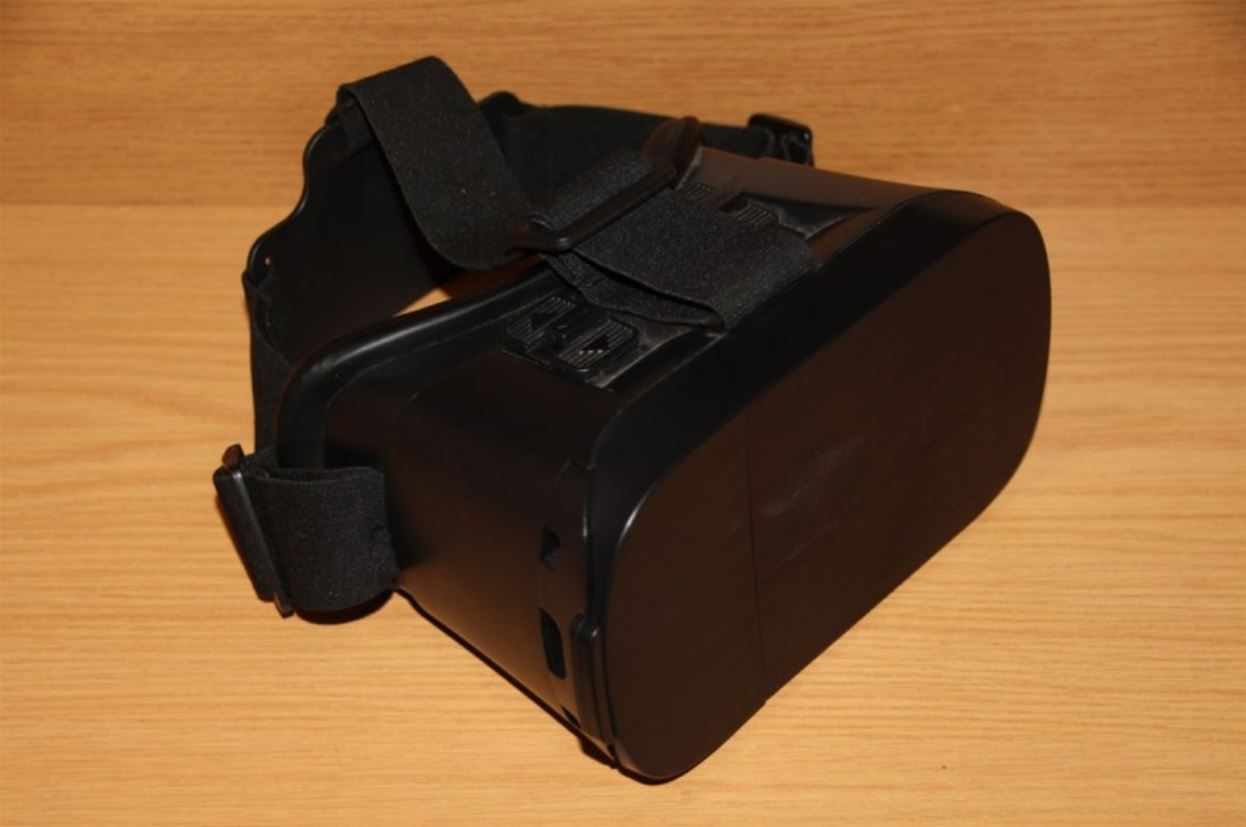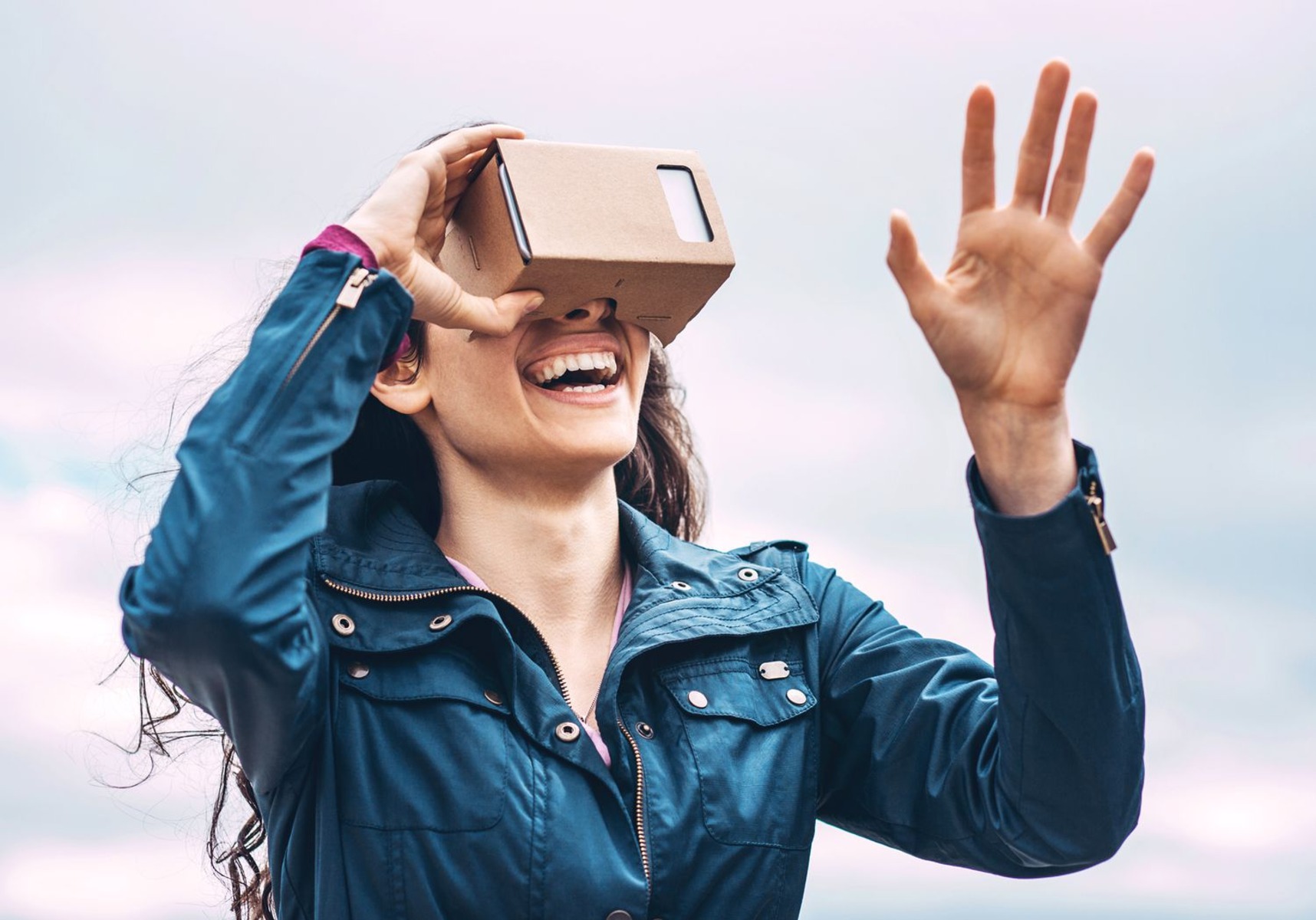Introduction
Virtual Reality (VR) technology has revolutionized various aspects of our lives, offering a simulated experience that can transport us to different environments and engage our senses in ways previously unimaginable. With its growing popularity, VR has proven to be much more than just a tool for entertainment. It has seeped into sectors such as education, gaming, therapy, and even social interaction, unlocking new possibilities and enhancing our experiences in these areas.
VR technology creates a computer-generated environment that allows users to interact with a three-dimensional world. By wearing a VR headset, users are fully immersed in this virtual environment, which tricks their senses into believing they are actually present in that place. This immersive and interactive experience offers a wide range of benefits, making VR a valuable tool in several fields.
Over the years, VR has evolved to be more accessible and affordable, making it available to a broader audience. It has become a game-changer in the world of technology, providing opportunities for enhanced learning, gaming experiences, virtual travel, therapeutic uses, training simulations, art, design, and social interaction. Let’s explore these benefits in more detail.
Enhanced Learning
Virtual Reality has transformed the learning experience by immersing students in a virtual world that brings subjects to life. Through VR, abstract concepts become tangible, and complex topics can be visualized in ways that traditional classroom methods cannot achieve.
Imagine studying the solar system by donning a VR headset and navigating through space, getting up-close views of planets, and witnessing the scale and distance between celestial bodies. VR can provide a multi-sensory experience that enhances understanding and retention of information.
Beyond astronomy, VR is also being used in healthcare education. Medical students can simulate surgeries and practice their skills in a controlled virtual environment, without the need for expensive equipment or risking patient safety. This immersive training can boost confidence and competence, allowing students to gain hands-on experience before entering the real world.
Moreover, VR enables students to travel back in time, exploring historical events and locations as if they were there. By immersing themselves in a virtual recreation of the Roman Colosseum or the ancient ruins of Machu Picchu, students can gain a deeper understanding of history, culture, and architecture.
One of the greatest advantages of VR in education is its ability to cater to different learning styles. Visual learners can benefit from the lifelike simulations, auditory learners can engage with recorded instructions and narration, and kinesthetic learners can interact with objects and environments within the virtual world.
By integrating VR into the learning environment, educators can create engaging and interactive lessons that promote curiosity, critical thinking, and problem-solving skills. Students become active participants in their learning journey, rather than passive recipients of information.
As virtual reality technology continues to evolve, we can expect further advancements in educational VR applications. From virtual field trips to global collaboration in virtual classrooms, the possibilities are limitless. VR has the potential to revolutionize the way we learn and empower students with knowledge and skills that will prepare them for the challenges of the future.
Immersive Gaming Experience
Virtual Reality has transformed the gaming industry by offering an unparalleled level of immersion and engagement. With VR, players can step into a virtual world and actively participate in the gaming experience like never before.
Gone are the days of conventional gaming where players are limited to controlling characters on a screen. VR introduces a new level of interactivity, allowing players to physically move, gesture, and explore within the virtual environment. This hands-on approach creates a sense of presence and realism, making gamers feel like they are truly inside the game.
Through VR, gamers can experience activities they would otherwise never be able to do in real life. Whether it’s flying through the skies as a superhero, battling zombies in a post-apocalyptic world, or racing against opponents in a thrilling car race, VR brings these adventures to life with a visceral and immersive experience.
The technology behind VR gaming ensures that players are not limited to just visuals. With motion tracking and haptic feedback, players can feel the impact of their actions, adding an additional layer of immersion. For example, when playing a boxing game, players can physically throw punches and feel the impact through the vibrations in their controllers.
Beyond the entertainment value, VR gaming offers benefits such as improving spatial awareness, hand-eye coordination, and problem-solving skills. In certain games, players may need to solve puzzles, strategize, or communicate effectively with other players to succeed, fostering cognitive development and teamwork.
Additionally, VR gaming has the potential to enhance social interactions. Multiplayer VR games allow players from different parts of the world to collaborate or compete in real-time, creating a sense of connection and community. Immersive VR environments also provide opportunities for virtual meetups and social gatherings, offering a unique social experience that transcends physical boundaries.
As virtual reality technology continues to advance, we can expect more innovative and compelling games that will push the boundaries of immersion and interactivity. VR gaming is paving the way for a new era of entertainment, where players can immerse themselves in captivating virtual worlds and embark on unforgettable gaming adventures.
Virtual Travel and Exploration
Virtual Reality has revolutionized the way we travel and explore the world. With VR, we can embark on virtual journeys to far-off places, experience different cultures, and witness breathtaking landscapes, all from the comfort of our own homes.
For those who are unable to physically travel due to various limitations, VR offers an opportunity to visit iconic landmarks and destinations they have always dreamed of. Whether it’s exploring the ancient wonders of Egypt, walking along the Great Wall of China, or diving into the colorful reefs of the Great Barrier Reef, VR allows us to immerse ourselves in these stunning locations.
Virtual travel experiences can be incredibly immersive, incorporating 360-degree videos, high-resolution images, and spatial audio. This combination of visuals and sound can transport us to different places, making it feel as though we are truly there. The sense of presence offered by VR can evoke powerful emotions and create memorable experiences.
In addition to tourism, VR also enables us to explore environments that are otherwise inaccessible or dangerous. For example, we can venture deep into the ocean and explore the mysterious underwater world or visit outer space and marvel at the wonders of the universe. Virtual exploration opens up new possibilities for discovery and learning.
VR travel experiences can serve as a valuable tool for education, providing students with a virtual field trip to enhance their understanding of geography, history, and culture. By immersing themselves in different environments, students can gain a deeper appreciation for the world around them and develop a global perspective.
Furthermore, virtual travel can also be a source of inspiration and relaxation. It allows us to escape the everyday routine and indulge in the beauty of nature, the grandeur of architecture, or the serenity of tranquil landscapes. VR travel experiences can transport us to a world of tranquility and wonder, offering moments of respite and rejuvenation.
As VR technology continues to advance, we can expect more realistic and immersive travel experiences. From virtual tours guided by experts to interactive cultural experiences, the possibilities for virtual exploration are endless. Virtual travel is not meant to replace physical travel but rather complement it, serving as a tool to augment our understanding, appreciation, and connection to the world around us.
Therapeutic Uses
Virtual Reality has proven to be a powerful tool in the field of therapy, offering innovative and effective solutions for various mental and physical health conditions. By creating immersive and interactive environments, VR can provide therapeutic benefits and improve the overall well-being of individuals.
One of the significant applications of VR in therapy is for the treatment of anxiety disorders and phobias. Through exposure therapy, individuals can confront their fears in a controlled and safe virtual environment. For example, someone with a fear of heights can gradually expose themselves to virtual heights, allowing them to gradually overcome their phobia. This form of therapy has shown promising results, providing a realistic yet controlled exposure experience.
VR is also being utilized for pain management. By immersing patients in virtual environments that elicit positive emotions and distract from pain sensations, VR can help alleviate discomfort. This form of distraction therapy has been particularly effective for acute and chronic pain conditions, providing a non-pharmacological method to manage pain and improve quality of life.
In the field of rehabilitation, VR has shown great potential. Individuals who have suffered from strokes or other physical injuries can engage in virtual therapy sessions to regain mobility and function. Through interactive exercises and simulations, VR can facilitate the relearning of movements and create a motivating and engaging rehab environment.
Furthermore, VR is being used for stress reduction, relaxation, and mindfulness training. Guided virtual environments can help individuals practice meditation, deep breathing, and stress management techniques. These immersive experiences offer a sense of calm and tranquility, allowing individuals to escape from the pressures of everyday life and focus on their mental and emotional well-being.
In addition to mental health benefits, VR has been used in the treatment of neurodevelopmental disorders such as autism spectrum disorder. Virtual environments can provide a controlled and structured platform for social skills training and behavioral interventions. Through virtual scenarios and interactive characters, individuals with autism can practice social interactions, communication skills, and emotional recognition in a safe and supportive environment.
As VR technology continues to advance, we can expect further applications in therapy and a deeper integration of VR into the healthcare system. Virtual Reality has the potential to transform the way we approach mental health and rehabilitation, offering personalized and effective interventions that improve the lives of individuals.
Training and Simulation
Virtual Reality has revolutionized training and simulation across various industries, providing a safe and immersive environment for individuals to practice and refine their skills. From aviation and military to healthcare and manufacturing, VR-based training programs offer realistic simulations that bridge the gap between theory and real-world experience.
In aviation, pilots can undergo virtual flight training to practice maneuvers, emergency procedures, and familiarize themselves with different aircraft models. This allows them to gain valuable experience without the risks associated with traditional training methods. VR simulations provide a cost-effective alternative, reducing the need for expensive flight hours and minimizing the potential for accidents during training.
The military also benefits greatly from VR training programs. Soldiers can immerse themselves in combat scenarios, training for combat simulations, and practicing tactics in a safe and controlled environment. VR simulations allow for repeated training sessions, immediate feedback, and the ability to analyze performance, enhancing readiness and effectiveness on the battlefield.
Healthcare professionals utilize VR simulations to refine their skills and practice critical procedures. Surgeons, for example, can perform virtual surgeries, simulating complex procedures and improving their technique before operating on real patients. This form of training reduces risks, improves patient outcomes, and allows for a standardized approach to medical education.
VR is also used in industrial training, particularly in high-risk environments such as oil refineries and nuclear power plants. Workers can practice safety procedures, emergency protocols, and equipment handling in virtual environments, preparing them for real-life situations without exposing them to actual danger.
Moreover, VR training is valuable in customer service and sales training. Employees can practice their communication and problem-solving skills, interact with virtual customers, and learn how to handle challenging situations. This immersive experience prepares them for real-world interactions and boosts their confidence and performance on the job.
Virtual Reality simulations are not limited to specific industries but can be tailored to various training needs. From driving simulations for learner drivers to virtual team-building exercises for corporate training, the applications are vast. VR provides a safe and controlled environment for individuals to learn, make mistakes, and improve their skills, ultimately enhancing their performance in real-world scenarios.
As VR technology continues to advance, we can expect more realistic and sophisticated training simulations. From incorporating advanced haptic feedback to simulating complex environments, the potential for immersive and effective training experiences is limitless.
Art and Design
Virtual Reality has opened up new avenues of creativity and innovation in the fields of art and design. With VR technology, artists and designers can push the boundaries of traditional mediums and explore new ways of creating, showcasing, and experiencing artistic expressions.
VR enables artists to work in a three-dimensional digital space, giving them the freedom to sculpt, paint, and design in a virtual environment. Through VR tools and applications, artists can create virtual sculptures, immersive paintings, and interactive installations. They can manipulate virtual materials, experiment with different textures and colors, and explore artistic techniques in a digital realm.
For architects and designers, VR offers the ability to visualize and experience designs in a realistic and immersive manner. Building designs can be brought to life through virtual walkthroughs, allowing clients to experience spaces before they are constructed. VR enables architects to make real-time changes and iterate on designs, leading to more efficient and client-centered design processes.
Art galleries and museums are embracing VR technology to enhance the visitor experience. Virtual exhibitions can transport viewers to distant museums and cultural landmarks, allowing them to explore artworks from different eras and cultures. VR exhibitions provide a level of interactivity and engagement that traditional galleries may not offer, creating a dynamic and immersive art-viewing experience.
VR has also made a significant impact on the gaming industry, blurring the lines between art and interactive experiences. Game designers can create visually stunning and immersive worlds, incorporating artistic elements into game environments, characters, and storytelling. This fusion of art and game design has resulted in visually captivating and emotionally engaging gaming experiences.
Virtual Reality has also given rise to virtual reality painting, which allows artists to create three-dimensional artworks in a virtual environment. Through specialized VR painting applications, artists can use digital brushes and tools to paint in a three-dimensional space, adding depth and volume to their creations. This form of art creation opens up new possibilities for artistic expression and experimentation.
Furthermore, VR provides opportunities for collaborative art creation. Artists can connect and work together in virtual spaces, sharing ideas, techniques, and inspirations. This virtual collaboration eliminates physical barriers and allows for artistic collaborations on a global scale.
As VR technology continues to evolve, we can expect more innovative applications and tools that will further revolutionize the art and design industries. Virtual Reality opens up a whole new world of possibilities for artistic expression, pushing the boundaries of creativity and reimagining how we engage with and create art.
Social Interaction
Virtual Reality has transformed social interaction by providing immersive experiences that bridge the gap between physical distance and connection. With VR, people can engage with each other in virtual environments, facilitating communication and shared experiences in ways that were previously unimaginable.
VR offers a sense of presence, allowing individuals to feel as if they are physically present in the same virtual space as others. This sense of presence enhances social interactions, making conversations and activities feel more personal and immersive. Whether it’s chatting with friends, attending virtual events, or collaborating on projects, VR brings people together in a virtual world.
Virtual Reality provides a unique platform for long-distance communication and connection. Friends and family members who are physically apart can use VR to meet up and spend time together, engaging in activities such as virtual games, movie nights, or simply socializing in virtual spaces. This sense of presence and shared experiences can help alleviate the feelings of distance and isolation.
Virtual Reality has also made a significant impact on social and multiplayer gaming. Gamers can join virtual worlds and interact with other players in real-time, forming virtual communities and friendships. The immersive nature of VR gaming fosters teamwork, cooperation, and social engagement, creating a sense of camaraderie among players.
Furthermore, VR provides opportunities for virtual social events and gatherings. From virtual conferences and concerts to virtual parties and meetups, VR offers a dynamic platform for social interaction. Individuals can connect with like-minded people, share experiences, and engage in activities as if they were physically present, breaking the constraints of physical distance.
Virtual Reality has also been used in therapy and support group settings, allowing individuals to connect with others who may be going through similar experiences. Support groups in VR provide a safe and supportive environment for individuals to share their stories, offer advice, and find comfort in a virtual community that understands their challenges.
As VR technology continues to advance, we can expect more immersive and realistic social interactions. From realistic avatars and gestures to haptic feedback, the future of VR social interaction holds great potential for creating more lifelike and meaningful connections.
However, it’s important to note that while VR provides unique opportunities for social interaction, it should not replace real-world social interactions entirely. Virtual socialization should be seen as a complement to physical interactions, offering an alternative and accessible way to connect with others, especially in situations where physical proximity is not possible.
Conclusion
Virtual Reality technology has undoubtedly revolutionized various aspects of our lives, offering immersive and interactive experiences that were once only possible in our imaginations. From enhanced learning and immersive gaming experiences to virtual travel, therapy, training, art, design, and social interaction, VR has transformed industries and opened up new possibilities.
In the realm of education, VR has provided students with engaging and interactive learning experiences that enhance understanding and retention. It allows for the exploration of abstract concepts and offers multi-sensory experiences that cater to different learning styles.
For gamers, VR has created an entirely new level of immersion, allowing players to step into virtual worlds and actively participate in the gaming experience. It provides opportunities for realistic simulations, interactivity, and social engagement, revolutionizing the gaming industry.
Virtual travel and exploration have become more accessible and engaging, offering individuals the opportunity to virtually visit iconic landmarks and experience different cultures. It provides a level of accessibility and exploration that would otherwise be impossible for many people.
In the realm of therapy, VR has proven to be a valuable tool for anxiety treatment, pain management, rehabilitation, stress reduction, and social skill development. It offers a safe and controlled environment for individuals to confront fears, manage pain, regain mobility, and improve overall well-being.
VR has also transformed training and simulation across various industries, providing realistic and immersive experiences for pilots, military personnel, healthcare professionals, and more. It allows for safe and repetitive practice, improving skills and performance in real-life scenarios.
Artists and designers have found new opportunities for creativity and expression in VR, pushing the boundaries of traditional mediums and exploring new ways of creating, showcasing, and experiencing art. VR exhibits and collaborations offer unique and immersive artistic experiences.
Lastly, social interaction has been revolutionized through VR, connecting individuals across distances and providing opportunities for virtual gatherings, gaming communities, and support groups. VR offers a sense of presence and shared experiences, bringing people together in a virtual world.
As VR technology continues to evolve, we can expect further advancements and innovative applications across industries. Virtual Reality has truly transformed the way we learn, play, explore, create, and connect. It has opened up new possibilities and enriched our lives in ways that were once unimaginable. The future of VR holds great potential, and it will continue to shape and enhance our experiences in the years to come.







